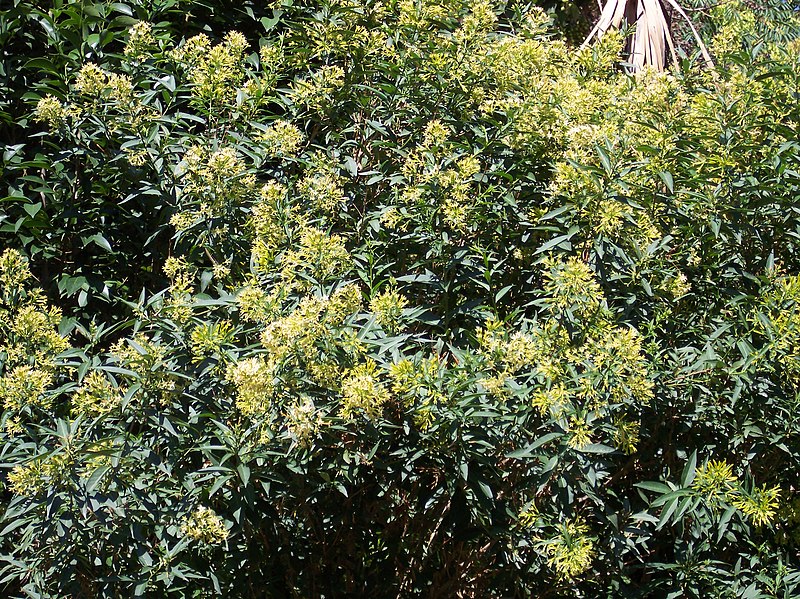Book of Mediterranean Trees, Shrubs and Climbers
Index
Family
Solanaceae
Genus
Cestrum
Species
parqui
Properties
shrub
Cestrum parqui, commonly known as green cestrum, green poison berry, Chilean
cestrum or willow-leaved jessamine, and is sometimes incorrectly referred to as deadly
nightshade, is a species of flowering plant in the family Solanaceae that is native to
central and South America. It is an upright, straggly, woody deciduous or semi-evergreen
shrub 2–3 metres (6 ft 7 in–9 ft 10 in) tall with one or more brittle green stems. Light
green leaves are alternate and shiny green to 12 cm (5 in) long, giving off a foul
rubbery smell when crushed. It has sprays of small, fragrant, tubular yellow-green
flowers approximately 2.5 cm long on the ends of the stems, flowering from late spring
to autumn. These produce clusters of small, black egg shaped berries during summer to
autumn. Green cestrum is highly attractive to birds, and seedlings are often found
growing under perching trees, along fence lines and on creek banks. It is also dispersed
by water. Spread by birds, it invades gardens, rural lands and bushland. It has a deep
and persistent taproot. This weed is considered a major problem because of its toxicity
to livestock (especially cattle) and poultry which eat green cestrum when there is a
shortage of other feed. All parts of the plant material, stems, leaves, berries and even
partly burnt roots pose a serious threat to livestock. Death is usually rapid and
painful. The plant is also known to be toxic to other livestock and humans. This species
is defined as a noxious plant in New South Wales under the Noxious Weeds Act 1993 and
all plants must be destroyed. In cultivation in the United Kingdom, this plant has
gained the Royal Horticultural Society's Award of Garden Merit.

